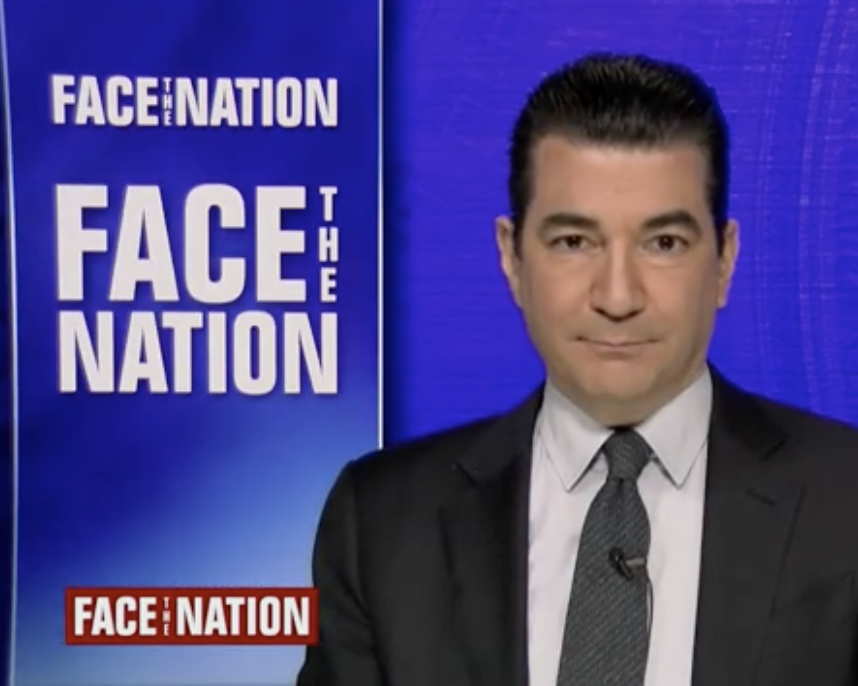
Dr. Sanjay Gupta: Explains the Science of Mouth-Taping
There’s a new sleep trend making waves: taping your mouth shut at night. Advocates say it can help you breathe better, sleep deeper, and even…
Thought Leader: Sanjay Gupta

MARGARET BRENNAN: We want to go now to former FDA commissioner Dr. Scott Gottlieb. He sits on the board of Pfizer as well as Illumina, and he joins us this morning from Westport, Connecticut. Good morning.
DOCTOR SCOTT GOTTLIEB: Good morning.
MARGARET BRENNAN: You just heard from Dr. Van Kerkhove, and- and she outlined all the mutations here. What is the bottom line from what she was laying out? I mean, she did seem to indicate there are concerns about this AstraZeneca vaccine and its efficacy against B.1.351 out of South Africa.
DR. GOTTLIEB: Well, I think there’s a rule of thumb we can assume that the vaccines are probably going to be about 20% less effective against these new variants from Brazil and South Africa, which has mutated some key regions of the protein that we target with our vaccines. We’ve seen that now in a Novavax trial, in the J&J trial, as well as with the AstraZeneca vaccine. The mRNA vaccines- and I’m on the board of Pfizer, which developed one of those, are very efficacious. And so even if we see a reduction in the efficacy of those vaccines, and it may not be as profound with those vaccines, you’re still getting very good protection with those vaccines. And frankly, you’re getting very good protection with the J&J vaccine as well. So I do think that the existing vaccines are going to offer reasonable protection against these new variants. And we also may be able to develop in a timely fashion, maybe in four or six months, a consensus strain that bakes in a lot of the different variation that we’re seeing to have boosters available for the fall. So I think that there is a reasonable chance that we’re going to be able to stay ahead of this virus as it mutates. Trevor Bedford at the Hutch has done some good work on this, and some people are speculating right now that this virus may have gone- undergone a really significant evolutionary leap, if you will. It’s mutated a lot all at once in different parts of the world, but it’s not going to continue to mutate at the same rate. It may have reached a new fitness level, but- but it’s going to slow down. It’s not going to continue to change as much. So we’re going to be able to keep up with it.
MARGARET BRENNAN: I asked the doctor about the probe underway in China. From your view, how important is it to know the origins of the first strain that- that we learned of with COVID-19 in China?
DR. GOTTLIEB: Well, look, I think it’s important from a political standpoint, and I think it’s important from a public health standpoint, so we know what the risk is for future transmission, for future jumps from zoonotic sources into- into the human population. And we kind of better understand the risk from coronaviruses more generally. I don’t think we’re going to find out and we’re certainly not going to find out with any level of certainty that’s going to put to rest some of the speculation that this could have been a lab source. Now, most people believe that this was a zoonotic source. You know as well as I do, there’s still speculation even in the government that it could have been from an accident in a laboratory. We know that that Wuhan laboratory was doing a lot of experimentation. It had a big repository of coronaviruses. I don’t expect that the WHO mission is going to firmly put that to rest. We would need access to the source strains. I suspect they’re not going to get that. That information, if it’s available, the Chinese government would have that. And so far they have not made that available.
MARGARET BRENNAN: You told us on this program last Sunday that it was Miami and Southern California that you were most concerned about as hot spots for this B.1.1.7. strain detected in the U.K. Are there- are those still the areas of greatest concern for you?
DR. GOTTLIEB: Yeah, and Florida’s growing pretty significantly right now, between five and 10% of the infections in Florida B.1.1.7, that UK variant, the more contagious variant and that’s centered in southern Florida. I think that what’s going to happen in Florida right now, they’re continuing to show declines in new infections like the rest of the country. I think as the rest of the country continues to come down that curve, you’re going to see a leveling off in Florida. And while I don’t think that they’re going to have another surge of infection, they could have persistent high infection because B.1.1.7 is gaining a better- better foothold in that part of the country. Southern California is probably right now about 5% of infections are B.1.1.7. So they’re a little further behind Florida. For the rest of the country, it’s probably less than 1% all around the country. Now, there could be localized hotspots, particularly counties where you have an outbreak of B.1.1.7. But I think for the most part around the country, it’s probably too little, too late. We’ll probably get ahead of it with our vaccines and the seasonal effect from the warming weather.
MARGARET BRENNAN: Getting ahead of it is a good thing. The CDC is expected to release guidelines this week on how to safely reopen schools. The CDC Director said vaccination of teachers is not a prerequisite. What should be a prerequisite?
DR. GOTTLIEB: Well, I think the prerequisite is putting in place mitigation steps in the schools. The school districts that have reopened successfully and it was good data out of North Carolina where they did some systematic research looking at the experience in those schools which were open, showed that when they wear masks, when they distance, when they try to take precautions in the classroom, there’s very little transmission within the classroom. The schools are not a vector of transmission and especially children under the age of 14 are less likely to both get infected and transmit the infection. I think it certainly would be good to be able to prioritize teachers to get them vaccinated so they’re not at risk from contracting the infection and spreading the infection. But I don’t think it’s necessarily a prerequisite. I think schools have demonstrated that they can open safely if they take precautions in the classroom.
MARGARET BRENNAN: When it comes to getting vaccines out there, we know retail pharmacies will begin receiving shipments this week. The Biden administration is sticking with that Trump plan of giving doses based on population. Is this the best way to get doses into the arms of the public?
DR. GOTTLIEB: I think for now. You know, they’ve made a lot of progress. We’ve had some days where there’s two million vaccines that have been delivered. I think we’re going to see that more consistently. That’s going to be the run rate. As we get into March, by the end of March, we’ll have delivered 250 million vaccines onto the market if the J&J vaccine gets authorized and in April we’ll probably deliver another 100 million vaccines onto the market. If you assume a 60-40 split between first doses and second doses, you assume about 60% of the supply that’s coming onto the market is going to first doses, by the end of March, we’ll have delivered a 150 million vaccines and in April, another 60 million, we’re going to run out of demand. I mean, I think we need to start thinking about the demand side of this equation soon.
MARGARET BRENNAN: Okay, Dr. Gottlieb, good to talk to you as always. And we’ll be back with a preview of Super Bowl LV. Stay with us.
Dr. Sanjay Gupta: Explains the Science of Mouth-Taping
There’s a new sleep trend making waves: taping your mouth shut at night. Advocates say it can help you breathe better, sleep deeper, and even…
Thought Leader: Sanjay Gupta
Joe Grogan: The Alzheimer’s Economic Threat
Social Security could become insolvent in as little as eight years, with more people retiring and living longer and fewer paying into the program. Alzheimer’s disease is…
Thought Leader: Joseph Grogan
Evan Feigenbaum on the outcomes of Putin’s India visit
Evan Feigenbaum of the Carnegie Endowment for International Peace argues that none of India’s major challenges can be meaningfully addressed by deepening ties with Russia.…
Thought Leader: Evan Feigenbaum

